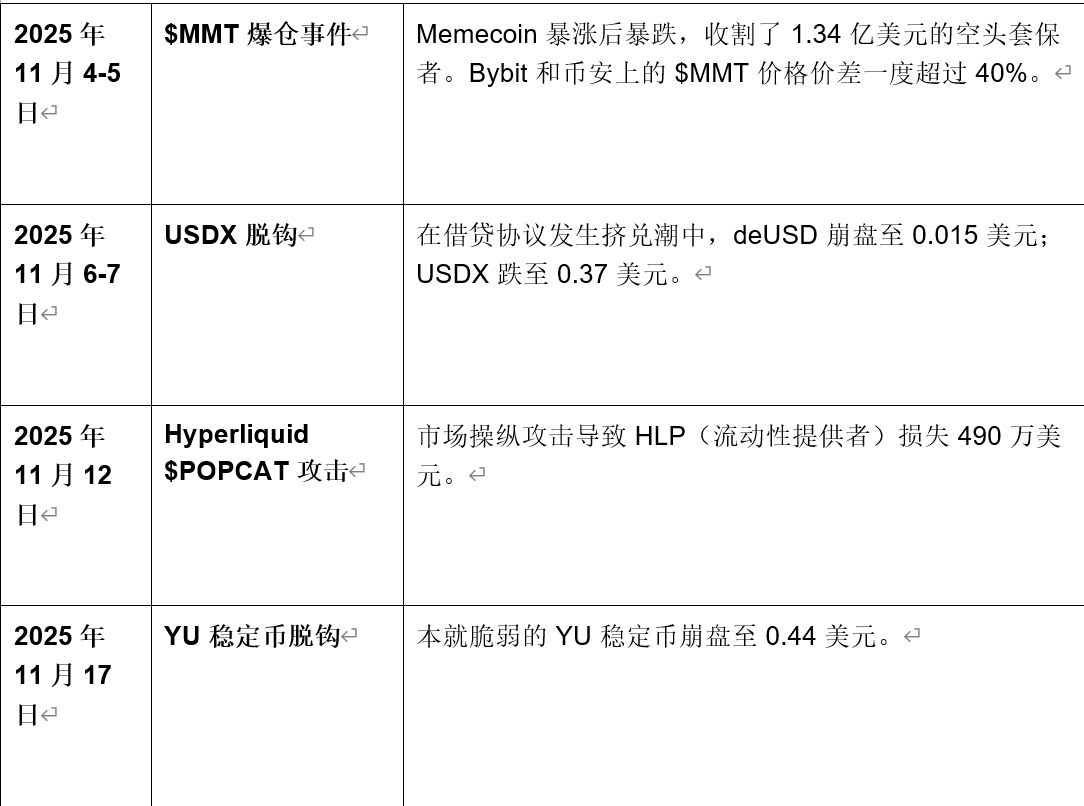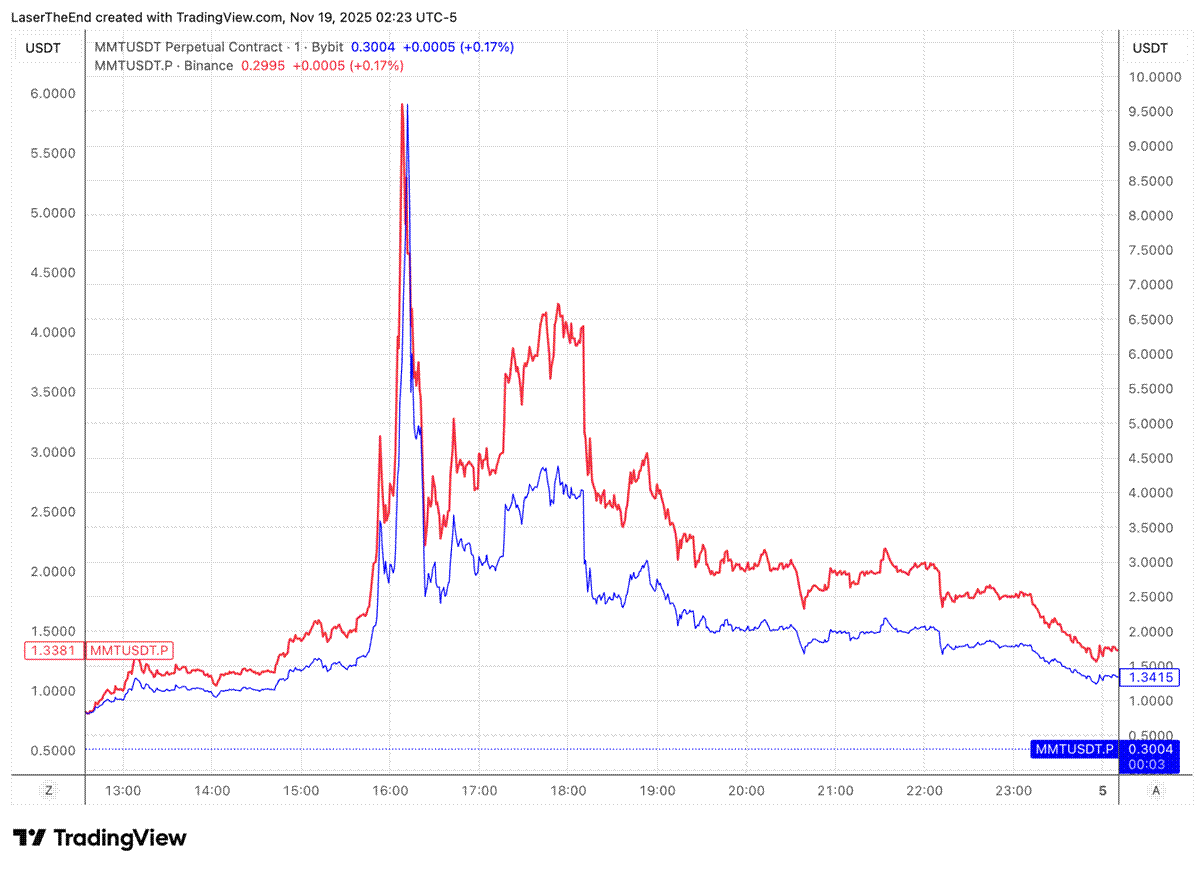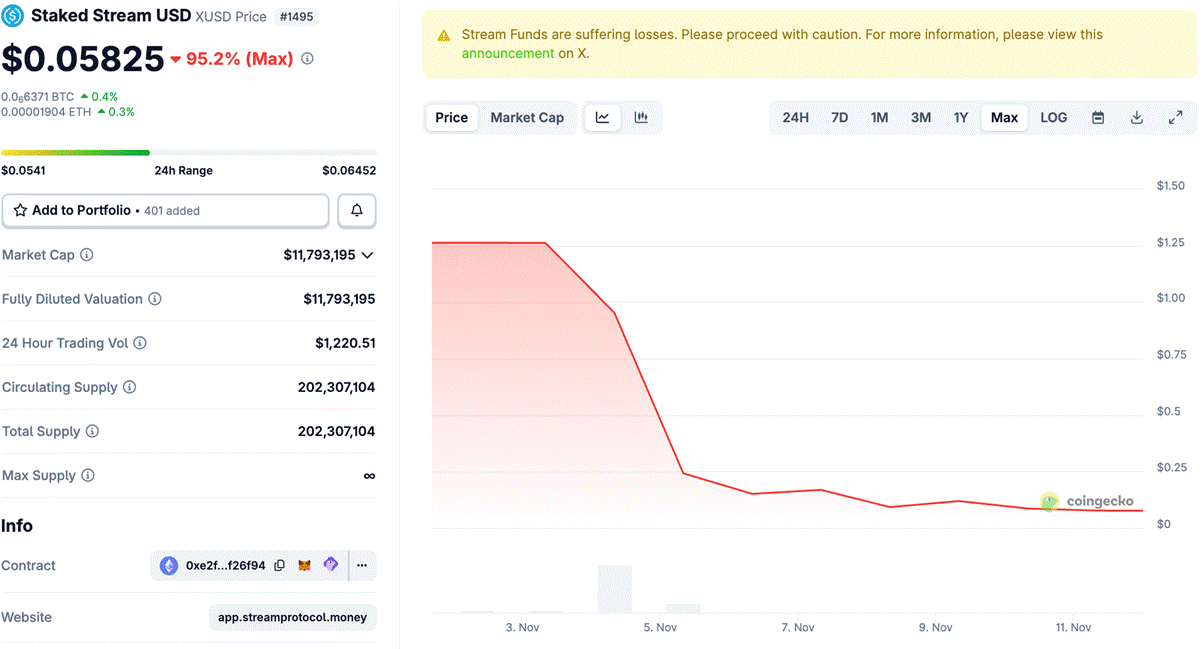BitMEX Alpha: Understanding Systemic Risk Before Your Next Trade
The crypto market has been devastating over the past two months. If you've been watching the market since October, it probably feels like the entire market has collapsed—over $50 billion has vanished, so-called "stablecoins" have become "unstable," and lending protocols have frozen withdrawals.
At BitMEX, we don't believe in so-called "accidents." We've been operating since 2014, longer than almost any other exchange in the industry. We've witnessed the 2017 peak, the 2020 crash, and now the deleveraging wave of 2025. If these eleven years of survival have taught us anything, it's this: risk is often a choice.
In this crisis, every margin call and withdrawal freeze was the consequence of specific decisions. By understanding the mechanisms that caused these systems to fail, you can identify the true risk-reward ratio before placing that trade.
Summary of the Cryptocurrency Crisis in Q4 2025:


Key events and vulnerability analysis:
- Binance System Outage (October 12-15): During the crash, Binance experienced a system outage, preventing users from managing their positions in time during the price drop. The exchange subsequently launched a compensation program that eventually increased to $400 million.
- Stream Finance Crash (November 3-4): The "CeDeFi" protocol reported $93 million in losses caused by external fund managers and suspended all withdrawals. This caused its native stablecoin xUSD to immediately decouple and triggered a wider DeFi contagion effect, freezing an estimated $285 million in assets.
- Stablecoin decoupling wave (November 6-17): A series of stablecoins became invalid one after another.
○ deUSD: Elixir's stablecoin, 90% of which was held by the nearly bankrupt Stream Finance, and its price crashed to $0.015.
○ USDX: Stable Labs' stablecoin decoupled to $0.37 after a $100 million vulnerability was discovered in Balancer V2.
○ YU: This Polychain-backed stablecoin decoupled to $0.44, marking its second decoupling in several months.
DeFi Vulnerability Exploitation and Volatility (August-November 2025):
- Hyperliquid Pre-Listing Contract Attack ($XPL and $MON): This vulnerability first appeared on the $XPL token on August 27th. Attackers exploited the fact that Hyperliquid pre-listing futures ("hyperps") use an internally-only mark price (8-hour moving average) and lack external oracles. A whale injected approximately $16 million into this illiquid market, creating a 200% "scam wick" from $0.60 to $1.80, resulting in the liquidation of over $17 million in short positions. The same vulnerability was exploited again on the $MON pre-listing trading pair, with a similar wick appearing during the early morning (around 4 AM) period of low liquidity to fleece traders.
- MMT token: $MMT experienced a speculative surge to $4.40 before immediately crashing, resulting in $134 million in short positions being liquidated.
- Hyperliquid $POPCAT Manipulation: On November 12, another manipulation attack targeting the POPCAT token resulted in a $4.9 million loss for Hyperliquid HLPs (liquidity provider pools). Due to the protocol's lack of an insurance fund, these losses were ultimately "shared" among the LPs.
Due to liquidations and the contagion effect of DeFi, the total losses are estimated to exceed $50 billion, severely shaking investor confidence.
Part Two: How to Avoid These Risks
These events did not happen randomly—they exposed specific, recurring vulnerabilities. Lessons learned from this crisis are outlined below for essential risk management advice to survive in this environment.
1. Managing leverage and platform risk
The $20 billion cascading liquidations and Binance's system failure are two sides of the same coin: platform risk and leverage risk.

- Manipulation and Arbitrage Traps: The surge and crash of $MMT proves that risk depends not only on the leverage you use, but also on the extreme volatility of the asset itself and its potential for manipulation. When a token can be manipulated to rise 10 times and then crash (as in the case of $MMT), even a 1x leveraged position faces survival risks. The key choice is not just how much leverage you use, but understanding the maximum potential losses from black swan manipulation events before entering the market and weighing the risks against the rewards.
- Choose a reliable, tried-and-tested platform: Not all exchanges can withstand extreme volatility. Binance's outage, which left users locked out when they were liquidated, is a trader's worst nightmare. This highlights the critical importance of platform reliability and a robust risk control engine.
- Prioritizing orderly liquidation: This is an area where BitMEX has consistently demonstrated its strength. As the inventor of perpetual contracts, our platform has been designed from day one to handle extreme market stress. Our powerful trading engine is built to prevent automatic liquidation (ADL) and loss sharing, ensuring orderly liquidation and maintaining platform stability when you need it most.
2. Reassess the "security" of your stablecoin.
The crashes of xUSD, deUSD, USDX, and YU prove that not all stablecoins are “stable”.

- Diversify your stablecoin portfolio: Never hold 100% of your "safe" funds in a single stablecoin. Diversify your holdings across top-tier, asset-backed stablecoins (such as USDC or USDT) and potentially overcollateralized stablecoins (such as DAI).
- The underlying support for scrutinizing deUSD: The collapse of deUSD was due to its illusory backing (90% held by a failing entity). The question remains: what exactly is backing this stablecoin? Is it cash? Cryptocurrency? Or the tokens of the underlying protocol? Avoid synthetic and algorithmic stablecoins that lack transparency, have poor liquidity, and lack real-world collateral.
- Stay away from high yields: Extreme yields, such as USDX’s 800% lending rate, are a desperate sign of a liquidity crunch, indicating that the protocol is on the verge of collapse.
3. Understanding the risks of DeFi contagion and manipulation
The contagion effect of Stream/Elixir and the manipulation of Hyperliquid highlight the unique dangers of DeFi.
- Beware of "isolated markets": The exploits in $XPL and $MON occurred because the protocol's price source was an "island," referencing only itself and not the external world. Before trading, especially with pre-listing pairs, ask: "What is an oracle? Does it track real-world prices, or can it be manipulated internally?"
- The failure of the Risk Curator Model: This most critical systemic risk in DeFi lending protocols lies in the failure of the "risk curator model"—a mechanism intended to vet collateral and monitor portfolio health. Protocols that fail to identify and remove toxic, high-risk assets (such as those that led to the Stream/Elixir contagion) inevitably accumulate bad debts in their vaults. This is a slow-burning systemic failure, where the intended safety net ultimately becomes a massive point of collapse for the entire ecosystem.
in conclusion
The crisis of 2025 serves as a stark reminder that risk management is not just a buzzword; it is the single most important skill for survival in the cryptocurrency market.
By controlling leverage, choosing reliable platforms, diversifying stablecoin holdings, and critically assessing DeFi risks, you can protect yourself from the next inevitable market storm.
- 核心观点:加密市场风险源于可识别的系统性漏洞。
- 关键要素:
- 交易所系统故障导致用户无法管理仓位。
- 稳定币大规模脱钩引发连锁反应。
- DeFi协议操纵与预言机漏洞频发。
- 市场影响:加剧投资者对中心化与DeFi风险的警惕。
- 时效性标注:中期影响



